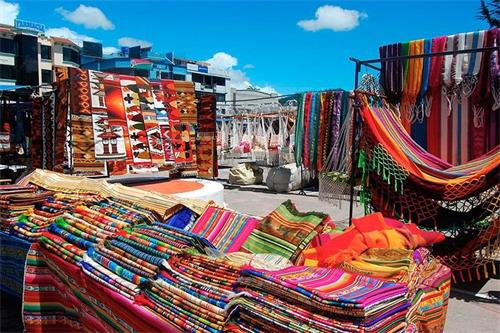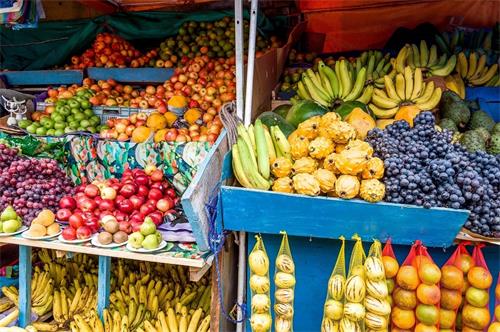
Nestled in the Andean highlands of Ecuador, the vibrant and bustling Otavalo Market stands as a testament to the rich cultural tapestry of the region. Renowned as one of the largest indigenous markets in South America, Otavalo Market offers travelers a unique and immersive experience into Ecuador's indigenous traditions and craftsmanship.
History and Cultural Significance:
Otavalo has a long history dating back to pre-Incan times, with the indigenous Otavaleños known for their skilled weaving and textile techniques. The market itself has evolved over centuries, becoming a hub for the exchange of goods and a celebration of indigenous culture. Today, it attracts both locals and tourists alike, offering a glimpse into the vibrant heritage of Ecuador.
Market Days and Atmosphere:
One of the key attractions of Otavalo Market is its lively and colorful ambiance. The market takes place every day, with Saturdays being the most significant when the Plaza de Ponchos overflows with a kaleidoscope of textiles, jewelry, and traditional crafts. The air is filled with the melodies of Andean music, and the vibrant clothing worn by the Otavaleños adds to the festive atmosphere.
Shopping Highlights:
The market is a treasure trove for those seeking authentic Ecuadorian crafts. Handwoven textiles, including the iconic Otavalo shawls and blankets, showcase the intricate patterns and vibrant colors that are characteristic of the region. Visitors can also explore stalls adorned with Panama hats, which are actually Ecuadorian in origin, and are meticulously crafted by skilled artisans.
Unique to Otavalo Market is its emphasis on sustainable and fair trade practices. Many of the vendors are local artisans, and purchasing their products directly supports their communities. From alpaca wool products to handmade jewelry and traditional Andean musical instruments, there is something for every taste and budget.

Interacting with the Otavaleños:
A visit to Otavalo Market goes beyond shopping; it provides an opportunity to engage with the local community. The Otavaleños are known for their warmth and friendliness. Don't be surprised if you find yourself invited to join in a traditional dance or offered a taste of local delicacies. This cultural exchange adds a personal touch to the overall experience.
Exploring Beyond the Market:
While the market is the main draw, Otavalo offers more for the adventurous traveler. Surrounding the town are stunning landscapes, including the Cuicocha crater lake and the Peguche Waterfall. These natural wonders provide a refreshing contrast to the vibrant market scene and offer opportunities for hiking and exploration.
Practical Tips for Visitors:
1. Timing Matters: While the market operates daily, Saturdays offer the most extensive array of products and cultural experiences.
2. Bargaining: Bargaining is a common practice in Otavalo Market. However, it's important to do so respectfully, acknowledging the value of the craftsmanship.
3. Cash is King: Many vendors may not accept credit cards, so it's advisable to carry sufficient cash.
4. Try the Local Cuisine: Take a break from shopping to savor local Ecuadorian dishes at the market's food stalls. Cuy (guinea pig) is a traditional delicacy worth trying for the more adventurous palate.
5. Respect the Culture: Be mindful of the cultural practices and traditions of the Otavaleños. Ask for permission before taking photographs, especially of people.

Roatan
Roatan: The Hidden Gem of Honduras
Roatan, the largest of Honduras' Bay Islands, boasts pristine white-sand beaches, crystal-clear turquoise waters, and lush greenery that creates a breathtaking backdrop for any vacation.

Patagonia
Patagonia: Trekking in the Wild South
Patagonia, the wild and untamed region at the southern tip of South America, is a haven for adventure seekers and nature enthusiasts.

Copán Ruins
Copán Ruins: Ancient Mysteries in Honduras
As visitors wander through the remnants of a once-flourishing civilization, they are transported to an era when Copán was a vibrant center of art, culture, and intellectual achievement.


